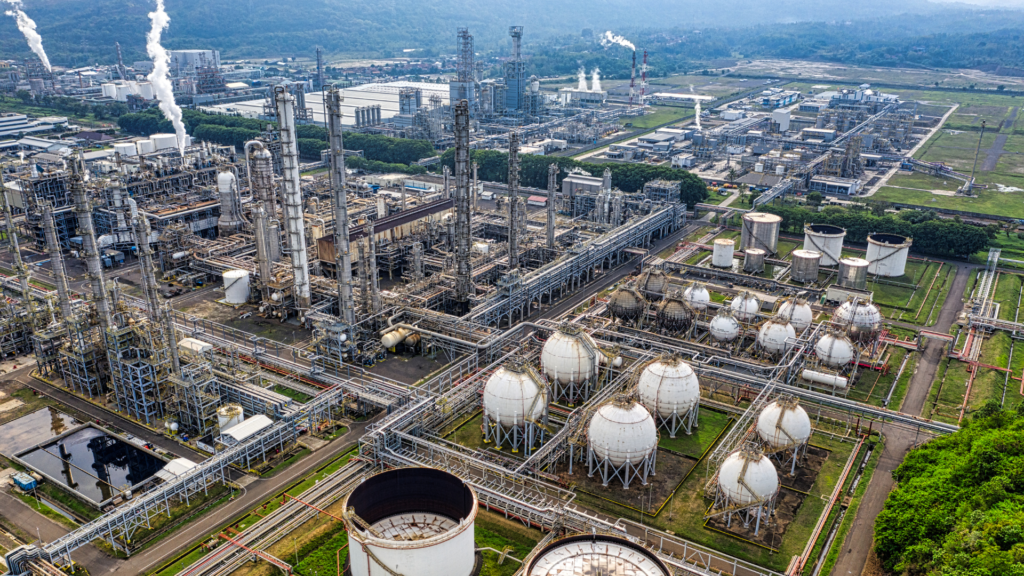The Carbon Footprint Challenge: Rethinking Sustainability in Industrial Operations
Industrial sustainability is evolving. Discover how emission tracking, AI-driven analytics, and cutting-edge tech help businesses reduce carbon footprints while improving efficiency.
In a steel plant just outside Raipur, furnaces roar with molten metal that drives an energy-intensive production line. While electricity consumption and direct emissions are the most visible markers of its intensity, an equally critical but less obvious responsibility runs in parallel: quantifying greenhouse gases at every point along the plant’s operations and value chain.
Overseeing this effort is the Chief Sustainability Officer, who monitors everything from furnace outputs and electricity usage to the indirect impacts of sourcing raw materials and transporting finished products. In the current business landscape, emission tracking has evolved into a fundamental aspect of day-to-day management. Regulatory bodies worldwide demand ever more detailed reporting, and stakeholders expect a heightened level of openness. Indian companies navigate a dual set of requirements—domestic sustainability regulations and global disclosure standards. Although this means facing added obligations, it also provides a chance to streamline operations, adopt newer technologies and build stronger credibility in a market that increasingly prizes environmentally conscious practices.

As part of standard business responsibility disclosures, companies can look to gain insights into operational inefficiencies through pattern recognition algorithms, identifying areas for streamlining processes. Investments in emission-reducing technologies, such as electric arc furnaces in steel plants, often lead to long-term savings and competitive advantages. For instance, optimising energy usage patterns or transport logistics can significantly reduce both emissions and operational costs. Tracking Scope 3 emissions fosters meaningful supply chain collaboration. For example, automotive manufacturers and steel suppliers might co-develop low-carbon alloys, reducing emissions across the production and use phases. This approach strengthens partnerships and aligns the value chain with broader sustainability goals, building trust with investors, customers and regulators while positioning the company as a sustainability leader in an increasingly ESG-focused market.
ITech can play a pivotal role in synthesising emissions data through cloud-native sustainability platforms engineered with microservices architecture and distributed data lakes. These systems employ interoperability protocols like RESTful APIs and OAuth 2.0 to integrate heterogeneous data sources—from legacy ERP modules to IoT sensor networks—into a unified data fabric. For example, event-driven architectures (e.g. Apache Kafka) can enable real-time ingestion of furnace telemetry, energy grid fluctuations and supplier-provided Scope 3 data, while graph databases (e.g., Neo4j) map multi-tier supply chain dependencies for granular carbon hotspot identification. Machine learning pipelines powered by time-series forecasting models (e.g. Prophet, LSTM networks) can simulate decarbonisation pathways, such as the impact of replacing coal-fired furnaces with hydrogen-ready systems.
Concurrently, digital twin simulations can create virtual replicas of production lines, enabling scenario testing for energy efficiency gains without operational downtime. To ensure auditability, blockchain-based ledgers cryptographically anchor emissions data at each node, aligning with ISO 14064-3’s MRV (Measurement, Reporting, Verification) requirements. Open-source frameworks like EcoChain (for life cycle analysis) and Cloud Carbon Footprint can further extend such capabilities, allowing companies to benchmark performance against industry-specific decarbonisation trajectories. However, scaling these systems demands edge computing infrastructure to preprocess IoT data streams locally, reducing latency and cloud costs.
However, technology alone cannot resolve the interpretive gap between raw emissions data and strategic action. While machine learning algorithms (e.g., anomaly detection models using supervised learning) can flag emission spikes with 99% precision, they lack the contextual awareness to diagnose root causes. For instance, a sudden CO₂ surge flagged by predictive maintenance systems could stem from suboptimal combustion stoichiometry in furnaces, inefficiencies in compressed air systems, or even supplier-side delays that force energy-intensive overtime production. This is where domain-specific human expertise bridges the divide. Sustainability officers apply root-cause analysis (RCA) frameworks, cross-referencing emissions data with operational metadata like equipment age, maintenance logs and real-time process variables (e.g., furnace temperature gradients). They might deploy failure mode effects analysis (FMEA) to prioritise interventions—whether retrofitting electrostatic precipitators, recalibrating PID controllers in energy systems, or adopting alternative binders in steelmaking to reduce coke consumption. India’s Carbon Credit Trading Scheme further amplifies the stakes. By aligning emissions reductions with GHG Protocol hierarchy standards, companies can transform granular data—such as kgCO₂e per tonne of crude steel produced—into verified carbon credits.
Advanced tracking systems enable activity-based accounting, distinguishing baseline emissions from reduction initiatives. For example, replacing diesel forklifts with hydrogen fuel cell variants generates quantifiable offsets, which can be modelled using marginal abatement cost curves (MACCs) to prioritise high-impact, low-cost projects. Moreover, integrating ISO 50001-compliant energy management systems with emissions data allows benchmarking against global peers. A cement plant might discover its clinker-to-cement ratio emits 8% more CO₂ than industry leaders, prompting the adoption of calcined clay blends—a decision requiring both data literacy and materials science expertise Such synergy of human-in-the-loop (HITL) systems and robust analytics transforms emissions tracking into a closed-loop feedback mechanism: IoT networks detect inefficiencies, engineers apply lean manufacturing principles to mitigate them, and blockchain-verified outcomes feed back into predictive models. This creates a cycle where sustainability gains compound—cutting energy costs by 12–18% in sectors like steel while strengthening compliance with evolving frameworks like CBAM.
Tracking emissions is as much about understanding operations as it is about managing environmental impact. It is a dynamic process that combines technology, human insight and cross-functional collaboration. By leveraging these elements effectively, businesses can transform emissions data into a roadmap for innovation, efficiency and growth, creating value for both the organisation and the planet. However, as technologies like AI and cloud computing reshape industries, their environmental footprint—from energy-intensive data centres to water-consuming cooling systems—becomes increasingly significant. Businesses will need to navigate the complex interplay between digital transformation and sustainability, ensuring that progress in one area does not come at the expense of another.
– Asish Singh, Student, Ashoka University
Study at Ashoka













